Last weekend we went to visit our daughter and her partner who live near Todmorden. They had recently signed-up to, and been on a training course for, river monitoring a brook that runs near a lecture theatre they are renovating:
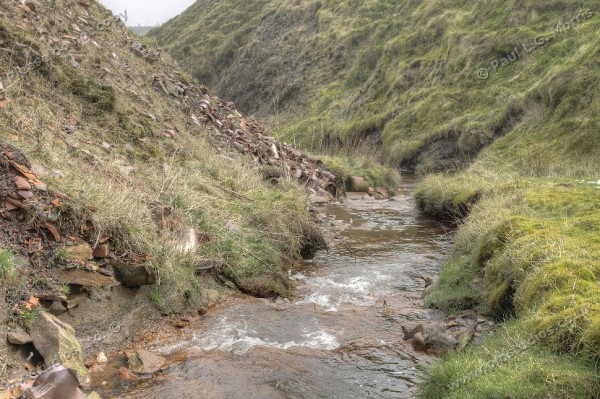 I took a series of photographs for them to use on their website and blog. The first image above is one of the river they are monitoring, Midgelden Brook, and was taken to give context to the activity. The area has many old mine workings that are still leeching pollution into the rivers. The Environment Agency doesn’t have the resources (funds) to do this an a frequent basis so a volunteer group has been established to monitor these rivers.
I took a series of photographs for them to use on their website and blog. The first image above is one of the river they are monitoring, Midgelden Brook, and was taken to give context to the activity. The area has many old mine workings that are still leeching pollution into the rivers. The Environment Agency doesn’t have the resources (funds) to do this an a frequent basis so a volunteer group has been established to monitor these rivers.
The monitoring is done by collecting samples of the insect life in the gravel and counting the occurrences of a set sample of key indicator species. This is done by kicking up the gravel and collecting the insects in a net:
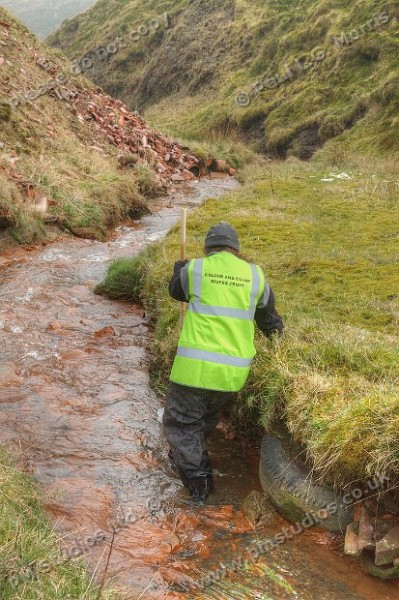 This particular image was taken to show the collection in process and the name of the charity they are working for (Calder and Colne Rivers Trust).
This particular image was taken to show the collection in process and the name of the charity they are working for (Calder and Colne Rivers Trust).
This third image below was taken from a second site further down the brook. It shows them emptying the net into a collecting bucket so that the samples can be examined before releasing the insects back where they came from.
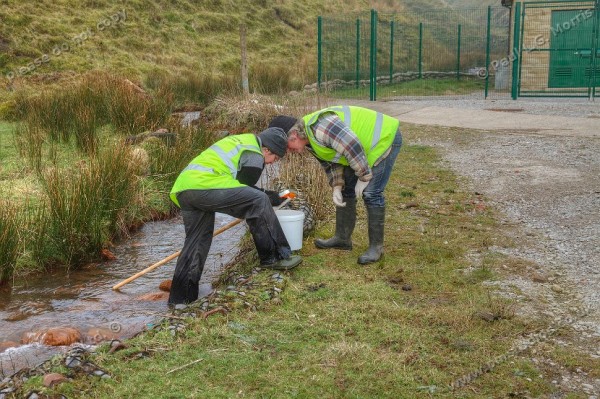 Just behind them you can see a building. This is a pumping station that collects the polluted water from a spring and pumps it to a purification plant that discharges the water further down. The photo below shows the polluted spring:
Just behind them you can see a building. This is a pumping station that collects the polluted water from a spring and pumps it to a purification plant that discharges the water further down. The photo below shows the polluted spring:
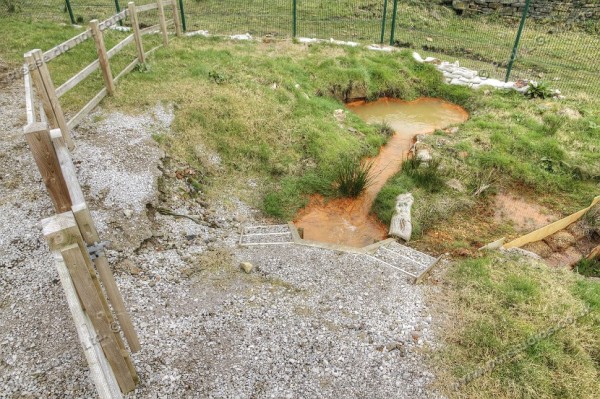 As the building and spring were behind a high steel fence, I put the camera on a monopod and held it high up above the fence, using the 10 second timer to release the shutter. This took many attempts before I got a satisfactory image.
As the building and spring were behind a high steel fence, I put the camera on a monopod and held it high up above the fence, using the 10 second timer to release the shutter. This took many attempts before I got a satisfactory image.
This shows them examining the finds at a third site below the point where the cleaned water re-enters the river:
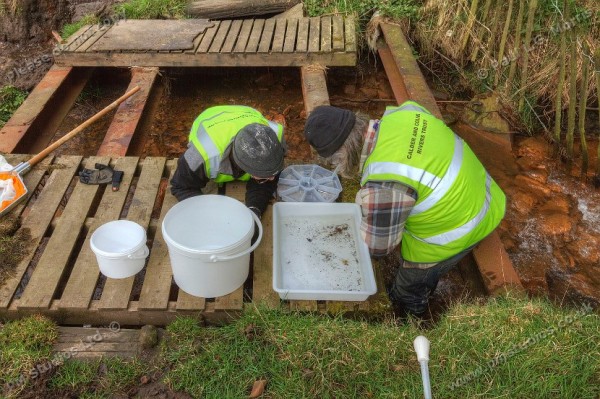 This has to be done on site so that the insects can be replaced after the counting. Samples from the bucket are poured into the square tray so the relevant insects can be seen. These are then pipetted into the smaller segmented tray for the final counting. This image is useful as it shows the equipment in use at one of the sites.
This has to be done on site so that the insects can be replaced after the counting. Samples from the bucket are poured into the square tray so the relevant insects can be seen. These are then pipetted into the smaller segmented tray for the final counting. This image is useful as it shows the equipment in use at one of the sites.
I wasn’t set up for macro photography so I had to use my standard zoom lens as close as possible to get some photos of the insects:
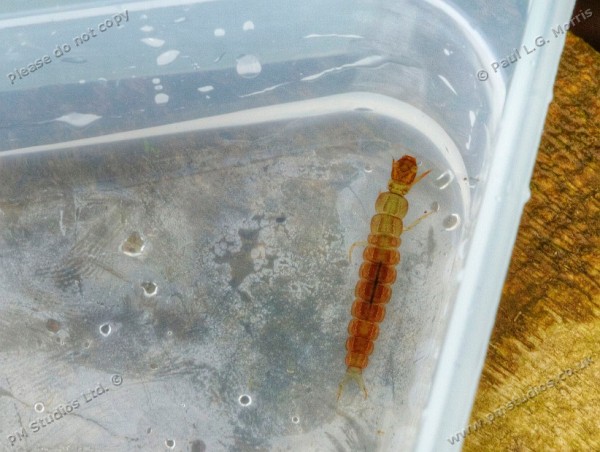 As this is a crop from a hand-held image taken in less than optimal lighting conditions, it is not too bad. Its purpose is to to show the final identification stage, at the site, in the sample tray. If I recall correctly, this is a Cadis fly larvae.
As this is a crop from a hand-held image taken in less than optimal lighting conditions, it is not too bad. Its purpose is to to show the final identification stage, at the site, in the sample tray. If I recall correctly, this is a Cadis fly larvae.
More information on their invertebrate monitoring can be seen on their website here.
